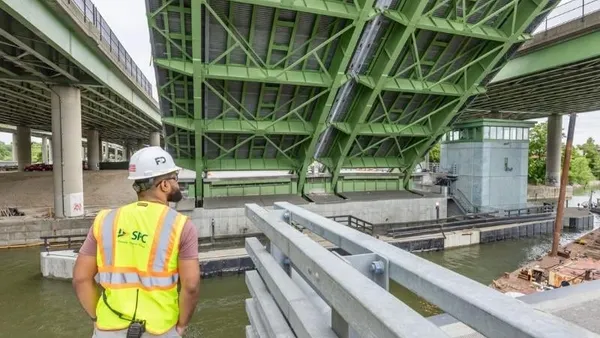Dive Brief:
- U.S. cities and states can reap billions of dollars in economic benefits if they make the right infrastructure investments, according to an opinion piece by Matthew Winkler of Bloomberg.
- Using the Denver International Airport (DIA) as an example, Winkler reported that although plans to invest $2 billion in the facility received considerable local pushback around 30 years ago, the airport now provides a yearly economic benefit of $26 billion and has created in excess of 270,000 jobs.
- In addition to tracing many economic positives in Denver back to the decision to build a modern airport, Winkler also pointed out that, over the last five years, investors benefited from the facility as well, as DIA bonds had a total return of 19%.
Dive Insight:
During the current presidential campaign, both candidates have expressed the need for the country to invest hundreds of billions of dollars in critical infrastructure projects. While Hillary Clinton has more specifics — $275 billion investment over five years, creation of an infrastructure bank to lure private money — Donald Trump's official infrastructure statement is limited to the current state of roads and bridges and a promise to provide more information in the near future.
Last year, Brendan Bechtel, incoming CEO of Bechtel, echoed the sentiments expressed by both candidates and Winkler in an op-ed piece for USA TODAY. Bechtel called on Congress to increase infrastructure spending and to take advantage of nontraditional financing structures like the public-private partnership (P3). P3s can shift the burdens of financing and maintenance to the private sector, allowing public entities to stretch their limited funds across more projects. This might be the only way to tackle the necessary backlog of infrastructure repairs and upgrades, since, according to the American Society of Civil Engineers, the U.S. is facing a $1.44 trillion infrastructure-funding gap, which could skyrocket to $5.18 trillion by 2040.
There is good news, however, for public entities that want to improve local roads and bridges. Low interest rates are making municipal bond issues more attractive, leading local governments to invest in new projects rather than refinancing older debt. Barclays Plc called infrastructure project growth "the story of the year" and predicted that municipal bond issues could reach $400 billion by the end of 2016.













